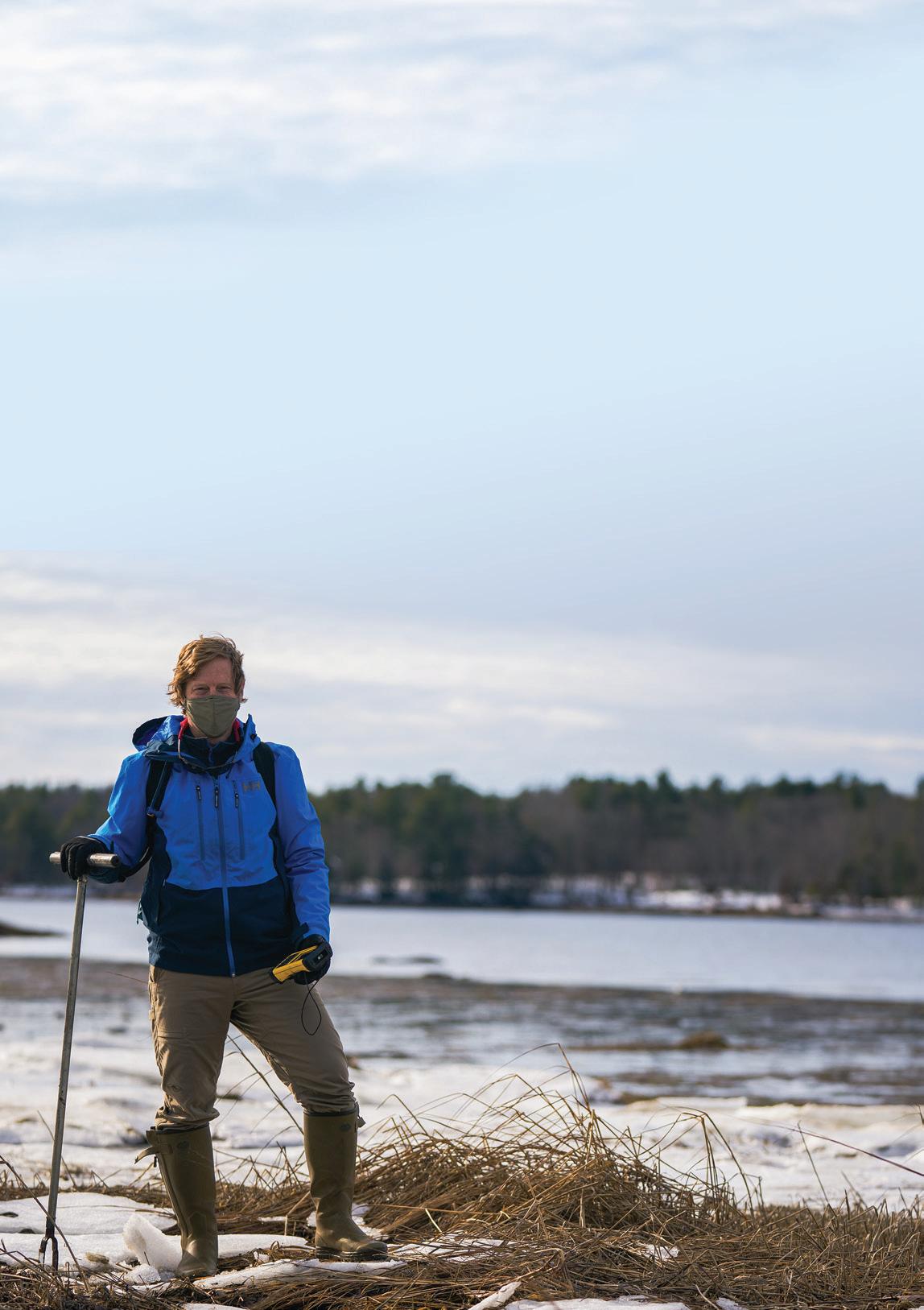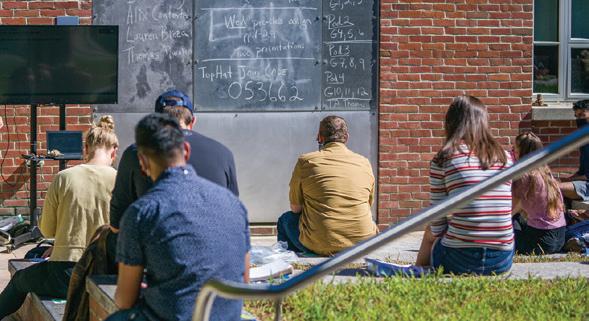
3 minute read
Faculty Find Silver Linings
FACULTY FIND SILVER LININGS IN A COVID-19 CLOUD
When Gregg Moore and his students returned from spring break in March 2020, the University of New Hampshire had switched to remote learning. This posed an acute problem for the research associate professor of biological sciences, who was right in the middle of teaching a plant systematics class that was entirely field-based.
Moore did what any researcher of his generation might do: He enlisted his 14-year-old son to serve as videographer and muddled through the semester, using an iPhone to explain plant taxonomy and root systems. “If you had asked me five minutes before the pandemic hit whether I’d ever thought of teaching an online course, I’d have said, ‘no,’” Moore recalls. “Today, I just can’t say enough about the new approaches I’m developing for different types of learning styles.”
Case in point: During the summer, Moore taught a remote course on field methods that enrolled students from around the world. Without student access to the facilities at Shoals Marine Laboratory, Moore redesigned his course to teach students techniques that could be applied in geographical settings as diverse as a backyard or a beach, a city sidewalk with weeds poking through its cracks or a public park.
“Instead of taking the class to Shoals or Jackson Estuarine Lab in Durham, I asked everybody to find their own little corner of nature,” Moore says.
“The students were very happy with the class,” says Moore. “I innovated because I had to, but I plan to use 100 percent of what I learned about video and remote teaching in the future.”
Not everybody has access to a trusty 14-year-old videographer, so different faculty members found other ways of developing new technical and teaching skills. Jesse Stabile Morrell ’99, ’04G, ’13G, principal lecturer and program coordinator for the nutrition major, recalls an impromptu meeting her department faculty held in Kendall Hall on the Friday before spring break. The topic, remembers Morrell, was, “How do we stop panicking and figure out how to use new teaching tools by the time the students return to a remote curriculum?”
That meeting quickly morphed into sustained, peer-to-peer teaching and collaboration that continues to help faculty master new tools such as using breakout rooms on Zoom, managing discussion boards in Canvas (the university’s online learning management system), operating classroom “owls” (which look like lava lamps with video cameras that turn an owl-like 360 degrees for remote participants) and administering quizzes and exams online.
Morrell says that remote learning has put new tools in her teaching toolbelt. “A regular feature of my classes involves bringing guest scholars to campus,” Morrell explains. “In place of this, I’m finding it much easier and less expensive to host them on Zoom. This semester, for example, I asked graduate students in my research methods class to read an article by a professor in Florida. Instead of dissecting it ourselves, we invited the author into the classroom via Zoom to lead a fascinating discussion.”
Students love to have class outside, right? This fall, Serita Frey, professor of natural resources and the environment, took the call to the next level by holding all her classes outside until it became too cold. In a twist on the “hybrid” format of mixed live and virtual content, she had students watch lectures remotely and do their lab work outside. What better place to study soil properties than an actual farm?
“Every day we hauled out our equipment and tables, and at the end of the day hauled them back in,” says Frey. “For many students, it was their only in-person experience that semester.”
Juan Rojo, clinical assistant professor of biomedical sciences, is busily figuring out how he will teach his spring mycology and parasitology class without the use of a five-headed microscope he has relied on in the past. He has seen many students struggle with the added discipline required for remote learning but takes a philosophical view of the challenging times. “University work is designed to teach students how to become independent learners,” he avers. “This year, students got to learn that the hard way. My hope for them is that when they graduate, they will know they can learn anything that they want by themselves.”

Serita Frey and her Studio Soils class in the James Hall Noonan Outdoor Classroom
Credit: Jeremy Gasowski

Serita Frey's Studio Soils class in the James Hall Noonan Outdoor Classroom
Credit: Jeremy Gasowski

